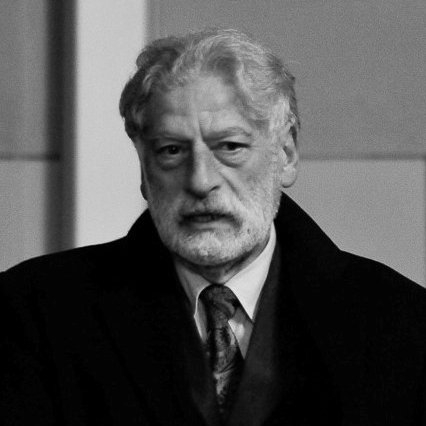
Duccio Balestracci
Lecturer in Medieval History at University of Siena

Lecturer in Medieval History at University of Siena
Perhaps in every artist, (regardless of his working medium) there exists a constant desire to return to his roots. To be sure this tendency emerges from the depths of Santini and can be clearly seen in his method of remembering his Sienese origins. This penchant reveals itself in diverse forms: some are evident, others are in code and recognisable only to those who, along with the artist, have shared the same spaces in time.
They are manifested by the architecture that at times forms the background of his figures, however more often it is this memory of his birthplace which becomes the main object of the painting: towers and belfries traced in an at times exasperated gothic style; buildings of a colour alluding to brick, (the main building material of the city); ogival arches that open out onto a maze of alleyways and staircases that disappear into the distance, and behind all this, it's not unusual to find the explicit image of the Torre del Mangia or the cathedral bell tower.
Surrounding the architecture is the unequivocal Sienese countryside, with its ripple of bare hills in the distance, inevitably bringing to mind the images by the Lorenzetti brothers, Sano di Pietro or Giovanni di Paolo; with its cypresses that either confine the horizon, or quite the contrary, impudently worm their way right up to the doorstep of the houses, like those "trees which have remained prisoners within the 14th century walls of Siena", wrote Tozzi, "having entered the city and incapable of finding their way out".
This is the Siena shown by Santini; but beside it there lies another more secret, more hidden Siena. Coded, but none the less intensely present.
It is the "Siena" vague amongst the electric and transparent blue of the sky, reference to the miniatures by Liberale da Verona in the manuscripts of the Piccolomini Library; in the "Siena" cited in the hexagonal towers of the apocryphal fortifications of Guidoriccio (by Simone Martini? by Duccio? o by someone else?), of the crenellated city gates and of the exiguous lights in the high tripartite windows.
It is the "Siena" caught by surprise in its characteristic of closure and inaccessibility, (not its only defining aspect, but certainly one of its most immediate), rendered in Santini's pictures by the winding streets which become stairs, by their positioning which blocks the way, by the rare and narrow windows which speak of a city suspect and forever defensive. Imagine (for those who know this city and perhaps, despite everything, love it just the same), that they allude to the difficulty of entering in its small and jealous world, aristocratic, arrogant in spite of its lying "Cor Magis Tibi Sena Pandit" declared above the principal northern gates. A little microcosm, that Santini doesn't deny and, quite the opposite, claims as his own in those expanses in which the architecture reveals the interior of the city-human corpse with roofs and columns which form its ribs and spine.
Only rarely do human figures appear in this Siena of Santini, almost as if the entire scene was reserved only for those who have the right to be there: Catherine Benincasa, is represented by lines that are indistinguishable from those that go to make up the architecture in the background. She is rendered in evanescent transparency in Portrait, in marmoreal immobility becoming a part of the column that she leans against in Meditation and in a vortices of lines; a dialogue or a mysterious embrace, in her meeting with the Pope at Avignon.
Santini holds Siena inside him; like an imprint on his chromosome map which, as for many of those born to this city, couldn't be eliminated even if he tried.